Do I Have Adult ADHD? An Evidence-Based Guide & Informal Screener
The Unseen Struggle of Adult ADHD
For many adults, life can feel like a constant, unseen struggle. You might have a persistent feeling of being “off” or fundamentally out of sync with the world around you, leading to chronic stress and low self-esteem.1 Perhaps you’ve been told you’re “lazy,” “disorganized,” or “not living up to your potential,” and after years of hearing it, you’ve started to believe it. This experience, however, is often not a reflection of character or effort but may be indicative of a neurodevelopmental condition: Attention-Deficit/Hyperactivity Disorder (ADHD).3
ADHD is a brain-based condition with a strong biological foundation, often rooted in genetics and the development of the central nervous system.4 It is not a personal failing, a lack of willpower, or a new phenomenon. Historically, ADHD was viewed primarily as a childhood disorder, which meant that countless individuals, particularly women and those with less disruptive, inattentive symptoms, were overlooked by clinicians and educators.1 This historical blind spot has created a “lost generation” of adults who have navigated life without understanding the neurological reasons for their challenges.
The landscape is changing. A pivotal update to the Diagnostic and Statistical Manual of Mental Disorders, Fifth Edition (DSM-5) in 2013 officially recognized and provided clear criteria for adult ADHD.3 This, combined with a surge in public awareness and destigmatization, has empowered a wave of adults to finally seek answers for lifelong difficulties.5 Many are now grappling with decades of self-blame and misdiagnoses, such as anxiety or depression, which often co-occur with ADHD but do not explain the core underlying challenges.1
This article serves as an evidence-based educational resource to help you understand the complexities of adult ADHD. It provides a detailed overview of the condition, its impact on daily life, and an informal tool for self-reflection. It is designed to offer clarity and validation, but it is crucial to remember that it is not a substitute for a formal clinical evaluation. An accurate diagnosis can only be made by a qualified healthcare professional.3
Understanding Adult ADHD: Beyond the Stereotypes
To truly understand adult ADHD, it is essential to move beyond the outdated stereotype of a hyperactive child who cannot sit still. In adults, the condition presents with a nuanced and complex combination of persistent challenges related to attention, impulsivity, and restlessness that significantly impair daily functioning.4 The American Psychiatric Association’s DSM-5 is the authoritative guide used by clinicians to diagnose the condition.3
The Three Faces of ADHD
ADHD is not a monolith; it manifests in three distinct presentations, or types 3:
- Predominantly Inattentive Presentation: This type is characterized by significant difficulty with focus, organization, and follow-through. An adult (age 17 or older) must exhibit at least five of the following symptoms persistently for at least six months:
- Often fails to give close attention to details or makes careless mistakes at work or in other activities.7
- Often has difficulty sustaining attention in tasks or leisure activities, such as during long readings or conversations.7
- Often does not seem to listen when spoken to directly, with their mind seeming elsewhere.7
- Often does not follow through on instructions and fails to finish work tasks, chores, or other duties.7
- Often has difficulty organizing tasks and activities, resulting in messy work, poor time management, and missed deadlines.7
- Often avoids, dislikes, or is reluctant to engage in tasks that require sustained mental effort (e.g., preparing reports, reviewing lengthy papers).7
- Often loses things necessary for tasks or activities, such as keys, wallets, paperwork, or mobile phones.7
- Is often easily distracted by external stimuli or unrelated thoughts.7
- Is often forgetful in daily activities, such as paying bills, keeping appointments, or returning calls.7
- Predominantly Hyperactive-Impulsive Presentation: This type is defined by excessive movement, restlessness, and a tendency to act without thinking. An adult must exhibit at least five of the following symptoms persistently for at least six months:
- Often fidgets with or taps hands or feet, or squirms in their seat.7
- Often leaves their seat in situations when remaining seated is expected (e.g., in the office or during meetings).7
- Often feels restless (in adults, this may replace the overt running or climbing seen in children).7
- Is often unable to play or take part in leisure activities quietly.7
- Is often “on the go,” acting as if “driven by a motor,” and may be uncomfortable being still for extended periods.7
- Often talks excessively.7
- Often blurts out an answer before a question has been completed or finishes other people’s sentences.7
- Often has trouble waiting their turn, such as in a line or in conversation.7
- Often interrupts or intrudes on others (e.g., butts into conversations or activities).7
- Combined Presentation: An individual meets the symptom criteria for both the inattentive and hyperactive-impulsive presentations.3
How ADHD Shows Up in Adulthood
For a formal diagnosis, these symptoms must be present in two or more settings (e.g., at work and at home) and must clearly interfere with, or reduce the quality of, social, academic, or occupational functioning.7 In adulthood, hyperactivity often becomes less of an external behavior and more of an internal feeling of restlessness, an inability to relax, or a mind that will not “shut off”.4
The core challenges of ADHD are rooted in deficits in the brain’s executive functions—the set of mental skills that include working memory, flexible thinking, and self-control.3 This impairment is not just an inconvenience; it creates a domino effect that can destabilize every area of life. A difficulty with planning and prioritizing at work leads to missed deadlines and poor performance reviews.4 This, in turn, is often internalized not as a symptom of a neurodevelopmental condition, but as a personal flaw: “I’m incompetent” or “I’m lazy”.15 This cycle of external struggle leading to internal self-criticism creates a powerful negative feedback loop. The repeated “failures” erode self-image and self-esteem, fostering a deep sense of shame.4 This chronic negative self-perception becomes fertile ground for co-occurring mental health conditions to take root and flourish.
The Web of Co-occurring Conditions
ADHD rarely exists in isolation. The persistent stress and functional impairments it causes often lead to or exacerbate other mental health conditions.4
- Mood Disorders: Many adults with ADHD also have depression or bipolar disorder. The constant frustration and pattern of setbacks associated with ADHD can significantly worsen or even trigger depressive episodes.4
- Anxiety Disorders: Anxiety is a frequent companion to ADHD. The challenges of managing daily life with executive dysfunction—the fear of forgetting an important appointment, the stress of a looming deadline, the worry about social missteps—can fuel overwhelming nervousness and worry.4
- Other Conditions: There is also an increased risk for substance use disorders, as some individuals may turn to alcohol or drugs to self-medicate their symptoms of restlessness or emotional dysregulation. Personality disorders and learning disabilities are also more common in the adult ADHD population.4
Understanding this web of comorbidity is critical. For many, treating only the anxiety or depression without addressing the underlying ADHD is like treating the smoke while ignoring the fire. Effective management requires a comprehensive approach that recognizes and breaks the entire cycle of impairment and its psychological fallout.
Informal Adult ADHD Self-Assessment (30 Questions)
This screener is an informal tool designed for self-reflection. It is based on the diagnostic criteria for ADHD in adults but is not a diagnostic test. Its purpose is to help you identify and organize your experiences into a recognizable pattern, which can be a powerful first step toward self-understanding and seeking professional guidance.9
For many, seeing a lifetime of struggles articulated in a list of specific questions can be a profound experience. It helps to externalize the challenges, shifting the narrative from “What’s wrong with me?” to “This is a pattern of traits that others experience too.” This recognition can foster self-compassion, reduce shame, and provide you with a structured vocabulary to discuss your concerns with a healthcare provider.
Instructions: Please reflect on your experiences over the past 6 months. For each question, choose the response that best describes how frequently you have experienced the issue.
Response Scale:
- 0 – Never
- 1 – Rarely
- 2 – Sometimes
- 3 – Often
- 4 – Very Often
Part 1: Inattention
- How often do you make careless mistakes or fail to pay close attention to details at work or during other activities?
- How often do you have difficulty sustaining your attention during long tasks, such as meetings, lectures, or lengthy reading?
- How often does your mind seem to be elsewhere during conversations, even when someone is speaking to you directly?
- How often do you start a new task or project but have trouble following through and finishing it?
- How often do you have difficulty organizing tasks and activities, leading to messy work, poor time management, or missed deadlines?
- How often do you avoid or delay starting tasks that require sustained mental effort, like filling out forms or preparing reports?
- How often do you lose or misplace essential items like your keys, wallet, phone, or important documents?
- How often are you easily distracted by things happening around you (external stimuli)?
- How often are you easily distracted by your own unrelated thoughts (internal stimuli)?
- How often are you forgetful in your daily life, such as forgetting to run errands, pay bills, or return calls?
- How often do you have problems remembering appointments or obligations?
- How often do you have trouble wrapping up the final details of a project, even after the challenging parts are done?
- How often do you have difficulty keeping your attention when doing boring or repetitive work?
- How often do you find it challenging to multitask effectively, losing track of one task while focusing on another?
- How often do you feel overwhelmed when you have to manage a task that requires multiple sequential steps?
Part 1 Score (Inattention): _____ / 60
Part 2: Hyperactivity & Impulsivity
- How often do you fidget with your hands or feet, or squirm in your seat when you have to sit for a long time?
- How often do you leave your seat in situations where you are expected to remain seated, like in meetings or at a restaurant?
- How often do you feel physically restless, as if you need to be moving?
- How often do you feel internally restless or “driven by a motor,” even if you are sitting still?
- How often do you have difficulty engaging in leisure activities or hobbies quietly?
- How often do you find yourself talking excessively in social situations?
- How often do you blurt out an answer before a question has been fully asked?
- How often do you find yourself finishing other people’s sentences for them?
- How often do you have difficulty waiting your turn in situations where it is required?
- How often do you interrupt or intrude on others’ conversations or activities?
- How often do you act impulsively without fully considering the consequences (e.g., impulsive spending, sudden decisions)?
- How often do you have a “hot temper” or experience frequent mood swings?
- How often do you struggle with low frustration tolerance, becoming easily irritated by minor setbacks?
- How often do you have difficulty unwinding and relaxing, even when you have free time?
- How often do you feel overly active and compelled to do things, as if you can’t “turn off”?
Part 2 Score (Hyperactivity & Impulsivity): _____ / 60
Total Score: _____ / 120
Interpreting Your Score
This screener is for educational purposes only. It is not a formal evaluation.
- A high score in Part 1 (Inattention) may suggest that you experience significant challenges with focus, organization, memory, and task completion.
- A high score in Part 2 (Hyperactivity & Impulsivity) may suggest that you experience significant challenges with restlessness, impulsivity, and emotional regulation.
- A high total score indicates that you are experiencing a high frequency of symptoms consistent with adult ADHD. If your scores are causing you distress or impairing your daily life, it may be beneficial to discuss these results with a qualified healthcare professional for a comprehensive evaluation.
A Deeper Question: Could It Be AuDHD? The Intersection of Autism and ADHD
As you reflect on your experiences, you may find that the ADHD framework explains a great deal, but still feels incomplete. For a significant number of people, there is another layer to their neurotype. The term AuDHD is used to describe the co-occurrence of Autism Spectrum Disorder (ASD) and ADHD.18 This is not a rare combination; research indicates that between 60% and 70% of autistic individuals also have ADHD.20
Historically, diagnostic rules prevented clinicians from diagnosing both conditions in the same person. It was only with the release of the DSM-5 in 2013 that a dual diagnosis became possible, opening the door for a more accurate understanding of the many individuals who live at this intersection.19
The AuDHD Experience: A Life of Paradox
To be AuDHD is not simply to have a list of autistic traits plus a list of ADHD traits. It is to live with a unique and dynamic neurotype where these traits constantly interact, overlap, and often conflict.22 Many with AuDHD describe their internal world as a “living contradiction” or a constant “tug-of-war” between competing neurological drives.24
This internal friction arises from the clash between core traits. The autistic brain often craves routine, structure, predictability, and deep, focused attention (monotropism). The ADHD brain, in contrast, craves novelty, spontaneity, stimulation, and rapid shifts in attention.21 When these two operating systems run simultaneously, it creates a unique set of experiences and challenges. This dynamic is not a simple sum of symptoms but an interactive system where the friction between traits creates emergent properties—a distinct neurocognitive profile. This explains why research often finds that the AuDHD population faces greater challenges with mental health and daily functioning than those with a single diagnosis.28 The impairment comes not just from the individual traits, but from the immense cognitive and emotional energy expended managing their constant conflict.
The table below illustrates how this paradox can manifest in daily life.
| Trait Domain | Autistic Trait | ADHD Trait | The AuDHD Experience |
| Routine & Structure | Craves routine, consistency; distressed by change. | Craves novelty, spontaneity; bored by routine. | Creates elaborate routines but struggles to stick to them; feels anxious with change but also restless with sameness.21 |
| Attention & Focus | Monotropic hyperfocus on special interests. | Distractible, struggles to sustain focus on non-preferred tasks. | Experiences intense hyperfocus but can be easily pulled away; may have multiple “special interests” that cycle rapidly.18 |
| Social Interaction | May struggle with social cues, find socializing draining. | May be impulsive, interrupt, overshare, seek social stimulation. | Craves social connection but gets quickly overwhelmed (social burnout); may mask heavily, leading to exhaustion.2 |
| Task Management | Meticulous, detail-oriented planner. | Struggles with organization, planning, and task initiation. | “Analysis paralysis”: Spends hours planning a task in perfect detail but cannot start it.25 |
| Sensory Processing | Sensory sensitivities (often sensory-avoidant). | Sensory-seeking for stimulation. | A confusing mix: needing sunglasses and earplugs to go to a loud concert; needing control over the sensory environment.18 |
The Amplified Challenges of AuDHD
Living with this internal paradox is exhausting. The constant effort to balance the need for structure with the pull of impulsivity requires a tremendous amount of cognitive energy. This is why individuals with AuDHD are at a higher risk for burnout—a state of chronic exhaustion, reduced functioning, and loss of skills that comes from long-term masking and navigating a world not built for their neurotype.18 Research confirms this lived experience, suggesting that individuals with AuDHD face higher rates of mental health difficulties, including anxiety and depression, and greater impairment in daily functioning than those with either ADHD or autism alone.26
Exploring Further: A Note on Autism Screening
If the description of the AuDHD experience resonates deeply with you, it may be helpful to explore your potential autistic traits further. For many adults, the diagnostic journey is sequential. The challenges associated with ADHD—such as difficulties with productivity, focus, and organization—are often more “visible” in a neurotypical world and may be identified first. It is often only after beginning to manage the ADHD traits that the underlying social, sensory, and routine-related differences characteristic of autism become more apparent. In some cases, as personal accounts reveal, treatment for ADHD with stimulant medication can quiet the “ADHD noise,” causing autistic traits to feel more prominent than ever before.25
This “sequential unmasking” is a common path to self-discovery. To aid in this exploration, several informal, non-diagnostic self-assessment tools are widely available online. Like the ADHD screener, these are not for self-diagnosis but can provide valuable language and insights to bring to a conversation with a professional.30
Two of the most common screeners for adults are:
- The Autism Spectrum Quotient (AQ): This is a 50-item questionnaire designed to measure the extent of autistic traits in adults. It assesses domains such as social skills, attention switching, attention to detail, communication, and imagination.33
- The Ritvo Autism Asperger Diagnostic Scale-Revised (RAADS-R): This is a more extensive 80-item questionnaire designed to help identify autistic adults who may have “masked” or camouflaged their traits throughout their lives. It assesses traits across four domains: social relatedness, circumscribed interests, language, and sensory-motor issues.32
Navigating Your Path Forward: Resources and Next Steps
Embarking on a journey of self-discovery can feel overwhelming, but you do not have to navigate it alone. The most important step is to seek a comprehensive evaluation from a qualified healthcare provider, such as a psychologist or psychiatrist with expertise in adult ADHD and neurodiversity.5
To prepare for your appointment, it can be helpful to:
- Document your symptoms and specific examples of how they impact your life.5
- Bring the completed informal screeners from this article.
- Ask a trusted partner, family member, or close friend for their observations about your patterns and challenges.5
There are many effective treatments and supports available for adults with ADHD and AuDHD:
- Therapeutic Approaches: Psychotherapy can be invaluable. Cognitive Behavioral Therapy (CBT), in particular, has been shown to be effective in helping adults with ADHD develop practical skills and change the negative thought patterns that often accompany the condition.14 For those with AuDHD, it is essential to find a neurodiversity-affirming therapist who understands the integrated nature of the experience and can help you build a life that honors both sets of needs.18
- ADHD Coaching: A coach can help you develop practical strategies for improving executive function skills like time management, organization, and planning.6
- Medication: For many, medication is a highly effective tool for managing core ADHD symptoms. Both stimulant and non-stimulant medications are available and can significantly improve focus and reduce impulsivity. It is crucial to work with a knowledgeable prescriber to find the right medication and dosage for you.6
- Workplace Accommodations: ADHD is a protected disability under the Americans with Disabilities Act (ADA). This means you may be entitled to reasonable accommodations at work to help you succeed. Examples include a quiet workspace, noise-canceling headphones, flexible working hours, or written instructions.6
- Community and Support: Connecting with others who share your experiences can be incredibly validating. Organizations like CHADD (Children and Adults with Attention-Deficit/Hyperactivity Disorder) offer a wealth of information, advocacy, and local support groups.40 The American Psychiatric Association (APA) also provides reliable clinical information for patients and families.10
Embracing Your Neurotype
Understanding that you may have ADHD or AuDHD is not about acquiring a label of deficit. It is about gaining a new, more accurate user manual for your brain. It reframes a lifetime of struggle into a story of resilience and adaptation. This knowledge is the first and most critical step toward moving from self-criticism to self-advocacy and building a life that truly supports the way your mind works.
While the challenges are real, so are the strengths. The ADHD brain is often associated with creativity, high energy, enthusiasm, and the ability to think outside the box. The autistic brain is often capable of incredible depth, focus, loyalty, and a strong sense of justice.18 Together, the AuDHD neurotype can possess a unique combination of innovative problem-solving, deep passion, and profound empathy. The goal is not to “fix” your brain but to learn how to harness its unique strengths while supporting its challenges. By seeking knowledge, finding community, and advocating for your needs, you can move forward with greater compassion for yourself and the power to thrive.
Disclaimer
This article and the included screener are for informational and educational purposes only. The content is not intended to be a substitute for professional medical advice, diagnosis, or treatment. The screener is an informal tool to help you explore your traits and is not a formal evaluation. An accurate diagnosis can only be made by a qualified healthcare professional after a comprehensive assessment. Always seek the advice of your physician or other qualified health provider with any questions you may have regarding a medical condition. Never disregard professional medical advice or delay in seeking it because of something you have read in this article.
References
- American Psychiatric Association. (2013). Diagnostic and statistical manual of mental disorders (5th ed.).
- Kessler, R. C., Adler, L., Ames, M., Demler, O., Faraone, S., Hiripi, E.,… & Walters, E. E. (2005). The World Health Organization Adult ADHD Self-Report Scale (ASRS): a short screening scale for use in the general population. Psychological medicine, 35(2), 245-256.
- Additional sources as cited throughout the article.
Bibliography
- https://www.apa.org/monitor/2023/03/adult-adhd-diagnosis
- https://www.additudemag.com/audhd-autism-adhd-experience/
- https://www.adhdawarenessmonth.org/adhd-symptoms-and-diagnosis/
- https://www.mayoclinic.org/diseases-conditions/adult-adhd/symptoms-causes/syc-20350878
- https://www.nationalacademies.org/news/2025/04/understanding-adhd-in-adults
- https://add.org/adhd-in-adults/
- https://www.cdc.gov/adhd/diagnosis/index.html
- https://www.psychiatry.org/patients-families/adhd/adhd-in-adults
- https://www.hcp.med.harvard.edu/ncs/ftpdir/adhd/6Q_ASRS_English.pdf
- https://www.psychiatry.org/patients-families/adhd/what-is-adhd
- https://www.ncbi.nlm.nih.gov/books/NBK519712/table/ch3.t3/
- https://www.psychiatry.org/news-room/apa-blogs/adhd-in-adults-new-research-highlights
- https://www.additudemag.com/7-executive-function-deficits-linked-to-adhd/
- https://www.researchgate.net/publication/233573605_CBT_for_Adult_ADHD_Adaptations_and_Hypothesized_Mechanisms_of_Change
- https://www.additudemag.com/slideshows/adult-adhd-articles-sleep-focus-marriage-diet/
- https://creyos.com/blog/adhd-comorbidity
- https://add.org/wp-content/uploads/2015/03/adhd-questionnaire-ASRS111.pdf
- https://audhdconnections.com/audhd-the-overlap
- https://www.medicalnewstoday.com/articles/audhd
- https://embrace-autism.com/audhd/
- https://www.sciencealert.com/audhd-explained-five-things-to-know-about-the-unique-challenges
- https://www.tiimoapp.com/resource-hub/audhd-autistic-adhd-explained
- https://embrace-autism.com/an-introduction-to-audhd/
- https://neurosparkhealth.com/audhd/audhd-life
- https://www.additudemag.com/audhd-autism-adhd-experience/
- https://embrace-autism.com/an-introduction-to-audhd/
- https://laconciergepsychologist.com/blog/audhd-autism-and-adhd/
- https://embrace-autism.com/audhd/
- https://www.londonpsychiatry.clinic/blog/audhd-explained
- https://www.webmd.com/add-adhd/audhd
- https://exceptionalindividuals.com/candidates/neurodiversity-resources/neurodiversity-quizzes/autism-quiz-test/
- https://embrace-autism.com/raads-r/
- https://embrace-autism.com/autism-spectrum-quotient/
- https://www.autismresearchcentre.com/tests/autism-spectrum-quotient-aq-adult/
- https://neurodirect.co.uk/screening-tests/online-autism-tests/autism-quotient-test/
- https://novopsych.com/assessments/diagnosis/ritvo-autism-asperger-diagnostic-scale-revised-raads-r/
- https://www.prosperhealth.io/test/the-raads-r
- https://advancedpsychiatryassociates.com/resources/blog/strategies-for-adults-living-with-adhd
- https://www.mayoclinic.org/diseases-conditions/adult-adhd/diagnosis-treatment/drc-20350883
- https://screening.mhanational.org/content/children-and-adults-attention-deficit-hyperactivity-disorder-chadd-resource-directory/
- https://www.chadd.net/
- https://www.cdc.gov/adhd/php/adults/index.html
- https://screening.mhanational.org/content/children-and-adults-attention-deficit-hyperactivity-disorder-chadd-resource-directory/
- https://www.apa.org/topics/adhd
- https://athealth.uk/library/supporting-a-loved-one-with-audhd-challenges-and-successes
- https://www.attwoodandgarnettevents.com/blogs/news/understanding-audhd-strengths






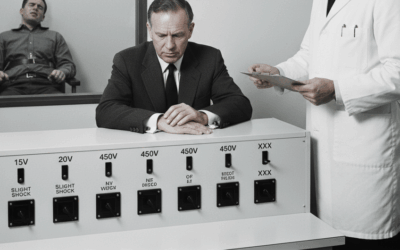
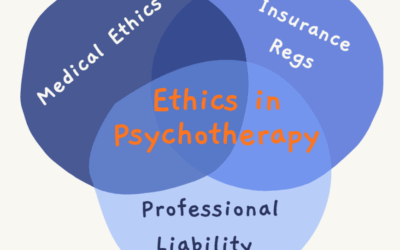














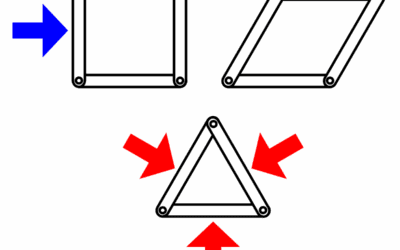


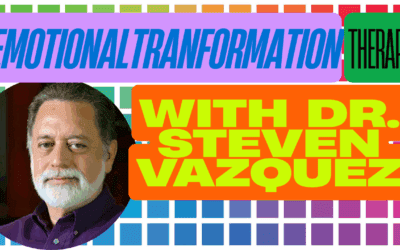
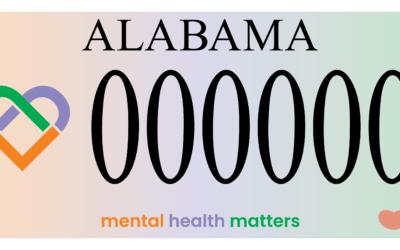
0 Comments